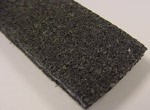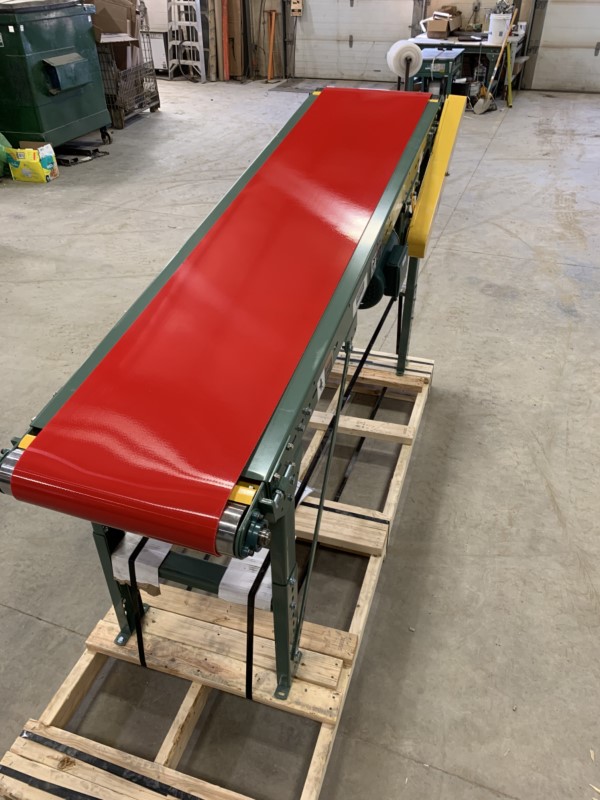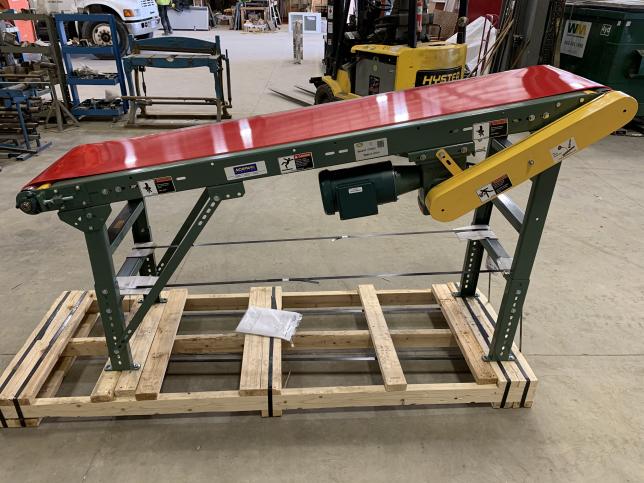Whether or not conveyance in your facility is enacted through the use of conveyor rollers (e.g. a conveyor roller bed) or otherwise (e.g. a slider bed conveyor), you can be sure that - depending on your applications – conveyor belt selection, with the aid and expertise of Norpak Handling, will prove to be a crucial undertaking for optimizing support, flow control, and grip of any products, especially in facilities where incline and/or decline conveyance is necessary.
The selection process for conveyor belts can be intimidating due to the high degree of tailorability and characteristics of the handled product.
Now that you’ve developed a thorough understanding of the art of belt tensioning, let’s take things back to the preliminary stages, i.e. conveyor belt selection. Possessing knowledge of the general factors that influence belt selection for the task at hand will only take you so far. Some of these general pointers include:
- Traits of handled product (e.g. low coefficient of friction such as ice or oily sprockets, bulky and hard to stack like apples, etc.)
- Atmospheric conditions in conveyed environment (e.g. dusty, hot, cold, pollution, humidity, etc.)
- General operations to take place (e.g. incline/decline conveyance, sorting and handling, quality control, gapping and tracking, high-speed scanning, etc.)
Let’s Get Physical
To really gain a deeper appreciation and intuition - a sixth sense if you will - when it comes to selecting conveyor belts, you need to iterate upon your understanding of the physical characteristics that distinguish one from another.
Next time you find yourself analyzing a belt, these properties should be defined first and foremost:
- Compound or fiber of the belt
- Belt strength (e.g. 140 = working tensile strength of 140lbs/inch)
- Minimum useable pulley diameter
- FDA or USDA approval
- Working temperature range
- Coefficient of friction
Dissecting the Anatomy of Conveyor Belts
You may not have thought it, but conveyor belts are comprised from more than just a continuous, uniform strip of material. That’s right, a belt can actually be broken down into two distinct compositional elements: the cover and the carcass.
The Cover
Protection of the carcass and imparting distinct conveyance surfaces are the name of the game when describing what the cover accomplishes. If you’ve had the task of browsing conveyor belts for long enough, then you’ll have come to see that the most common materials used in industry are:
1) PVC – resistance to mineral and vegetable oil, and animal fat.
2) Neoprene – oil resistance.
3) Polyurethane – oil and abrasion resistance.
4) Silicone – maintains structural composition in hot and cold environments.
5) Teflon – resistance to adherent materials.
6) Rubber – water and cold resistant. Great gripping surface.
7) Nitrile – resistant to all oils.
8) Kevlar – resistance to heat, mildew, and chemicals.
The Carcass
Belt strength is in fact in reference to the carcass – the fabric or cords that form the conveyor belt. Fine adjustment of this strength can be achieved by manipulating the number of piles or interwoven fabrics (usually synthetic in nature) within the carcass.
Standard Belting
With all this new informational under your ‘belt’, it’s about time we put it into practice by providing a real-world example of one of the standard belting options we, as conveyor experts, at Norpak Handling provide for use on a whole host of conveyor model types.
Ultimate 140 BBS (Nitrile Impregnated, Buffed Both Sides)
An ideal choice (shown in Fig. 1.) for most general product handling purposes due to its impressive oil resistance, low noise level, reduced build-up on roller, and ability to remain structurally sound at elevated temperatures.

Fig. 1. Close-up of the Ultimate 140 BBS belt – a standard belting option.
Custom Belting
On the other side of the ‘belt’, we have an example of a highly customised belt we recently installed for a slider bed conveyor (the Hytrol model TA) in our shop.
IWP 140 – 3/32” Red Urethane X FS Belt
After securing the conveyor (sans the belt), we went on to select, order, install, and test the specialised belt within our own facility (see Fig. 2.).
The need for such a specialised product came about as one of our customers required a belt covering that demonstrated exemplary cut and gouge resistance for conveying sheet metal stampings. As for why a Hytrol TA slider bed was selected as the conveyor model of choice, this was agreed upon due to the weight of the handled parts not being particularly heavy, the short conveyance distance, and being a cost-effective solution (more on this in our next section).

Fig. 2. A look at the IWP 140 Urethane X FS belt on the Hytrol TA slider bed conveyor – a fully customized solution.
A success story like this only came about due to Norpak’s long-standing tradition in selecting and supplying Hytrol conveyors, complete with customized belting, that are adapted to highly bespoke applications.
The Right Conveyor Surface
Having nailed down the selection of a conveyor belt that has been adapted for the unique challenges imposed by the handled product, the next stage is to consider the carrying surface in which the belt is to run over.
As a forewarning, identifying the ideal bed to run the conveyor belt over is contingent on a complex web of factors and you are best served consulting with experts, such as those at Norpak Handling, that have seen a whole host of projects through to completion successfully.
Nonetheless, to put it simply and to steer your compass in the right direction, we’ve distilled the scenarios most facilities find themselves challenged with and what carrying surface is recommended to surmount said challenge:
- Slider Bed Capabilities
- Most decline conveyors.
- Cost-effective solution for similar applications and footprint.
- Achieving unit load stability for applications such as scanning, labelling, etc.
- Supporting heavy unit loads on the carrying surface.
- Lighter unit loads, especially products prone to falling between rollers.
- Roller Bed Capabilities
- Practical for incline conveyors, especially those with minimal horsepower requirements.
- Long conveyor runs that require a significant load carrying capacity, especially for conveyors on a single drive.
It Doesn’t End There…
These are just two of the many belting options that exist, from bare nylon to thermoplastic covers, you can easily find yourself falling down the rabbit hole and splitting hairs between ideal conveyor belts.
That’s why Norpak Handling is here - with more than 30 years of expertise to bank on, we’ve put the protocols, qualified technicians, services, and stocked inventory into place to help keep your conveyors…conveying!
Our dedication to outstanding service in the field isn’t relegated to a sales pitch, we take action! No better is this personified by our relocation last month from Delta, B.C. to Surrey, B.C. We didn’t do this for a better view. Instead, we had the customer in mind behind this decision to better align with their need for a larger selection of spare parts or for on-site visits for customization, testing, and maintenance.
Norpak Handling is a leading Canadian conveyor equipment and systems solution provider, specializing in complete project integration services including maintenance and project management.










